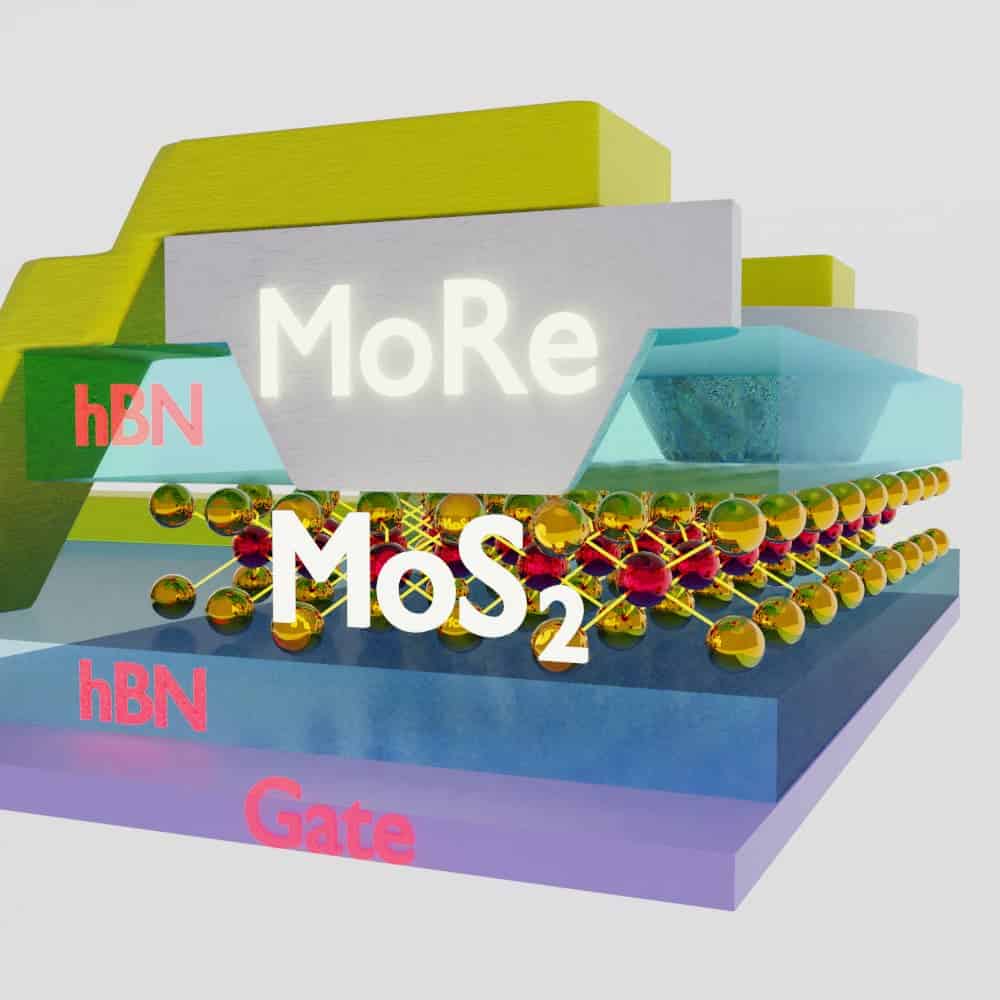
Physicists in Switzerland managed to arrange an unholy matrimony between an ultrathin semiconductor and an ultra-chilled superconductor. The resulting device allows for peculiar physical phenomena to form that may prove useful in manufacturing novel electronic and optical machines such as quantum computers.
Exotic physics for the exotic applications of the future
Semiconductors have recently made headlines due to shortages that are threatening to disrupt the global supply of consumer electronics. Smartphones, TVs, automobiles, and virtually anything that is tech (which is virtually anything ‘smart’ nowadays) all rely on semiconductors, which are materials that can switch current on and off. These allow processors to perform boolean logic and solar panels to harvest electricity from photons.
Superconductors on the other hand are like frictionless highways for electrons, being able to carry the charged particles with zero electrical resistance. The most common superconductors typically have to be cooled down with liquid nitrogen close to -250°C (-480°F) for them to conduct electricity with no resistance. In this state, the conductor is composed of a rigid lattice of positive ions drowned in a sea of electrons.
A normal conductor has electrical resistance because electrons moving through the lattice also bump into it, slowing down in the process. This motion also causes atoms to vibrate, which is why electrical resistivity also leads to energy loss as heat.
On the other hand, in a superconductor, the lattice is so rigid due to the low temperature that mechanical sound waves (phonons) ripple through it — and electrons ride the wave along with them. What’s more, electrons in a superconductor form bonds called ‘Cooper pairs’ which flow through the material like a fluid. But if the temperature rises, the Cooper pairs break apart and the superconductive state dissolves.
“In a superconductor, the electrons arrange themselves into pairs, like partners in a dance – with weird and wonderful consequences, such as the flow of the electrical current without a resistance,” said Dr. Andreas Baumgartner, a researcher at the Swiss Nanoscience Institute and the Department of Physics of the University of Basel and lead-author of the new study.
“In the semiconductor molybdenum disulfide, on the other hand, the electrons perform a completely different dance, a strange solo routine that also incorporates their magnetic moments. Now we would like to find out which new and exotic dances the electrons agree upon if we combine these materials.”
Baumgartner and colleagues embarked on their research looking to experiment with ultrathin semiconductors, which are materials no thicker than a single molecule. These monolayer semiconductors should theoretically be able to exhibit unique and appealing characteristics such as the use of electric fields to influence the magnetic moments of electrons. Additionally, monolayer semiconductors may exhibit wacky quantum mechanical phenomena that may prove useful in developing the next generation of quantum computers.
By stacking multiple such monolayers of semiconductors it is possible to make new synthetic materials known as van der Waals heterostructures with unique interlayer coupling and optoelectronic properties.
The researchers went a step further and experimented by adding superconducting contacts to a monolayer of the semiconductor molybdenum disulfide. No other research group devised a van der Waals heterostructure with a superconductor before.
To protect the fragile atom-thick semiconductor, the researchers sandwiched the material between two thin layers of boron nitride, through which they had previously etched the contacts vertically using electron-beam lithography and ion etching. A thin layer of molybdenum rhenium (the contact superconductor) was then carefully added. In this configuration, the material retains its superconducting properties even in the presence of strong magnetic fields.
The researchers found evidence of strong coupling between the semiconductor layer and the superconductor, which were chilled to just above absolute zero (-273.15°C).
“Strong coupling is a key element in the new and exciting physical phenomena that we expect to see in such van der Waals heterostructures, but were never able to demonstrate,” says Mehdi Ramezani, lead author of the study.
“And, of course, we always hope for new applications in electronics and quantum technology,” says Baumgartner. “In principle, the vertical contacts we’ve developed for the semiconductor layers can be applied to a large number of semiconductors. Our measurements show that these hybrid monolayer semiconductor components are indeed possible –perhaps even with other, more exotic contact materials that would pave the way for further insights,” he adds.
Now that this prototype was deemed feasible, the researchers in Switzerland plan on experimenting with other types of semiconductors and different stacking configurations.


